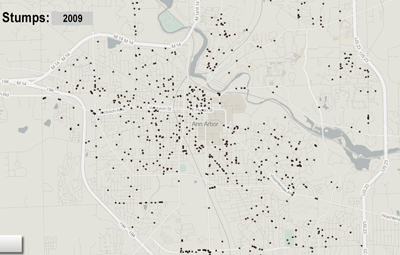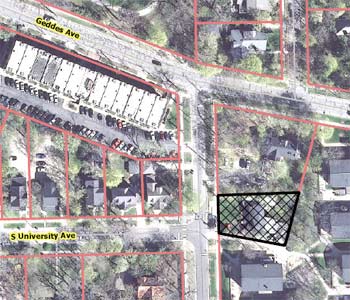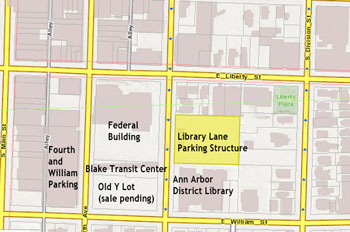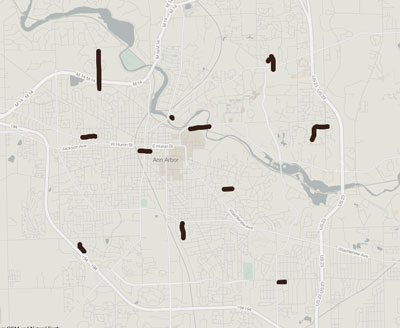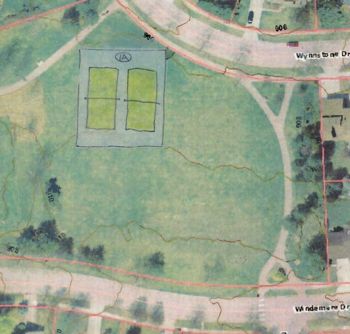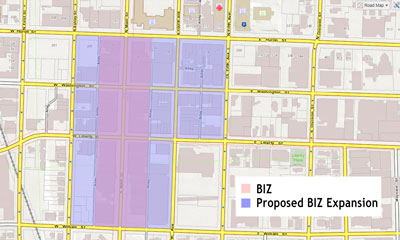Ann Arbor city clerk records show that Samuel McMullen took out petitions on April 3 to contest the Ward 3 city council Democratic primary on Aug. 5. The University of Michigan student joins Julie Grand and Bob Dascola as the third candidate to take out petitions for the Ward 3 primary.
According to Ann Arbor city clerk Jackie Beaudry, McMullen meets the city charter’s one-year durational residency and voter registration requirements – through his voter registration indicating an address on East University Avenue in Ward 3, which dates from October 2013.
Those charter requirements have become a point of contention for Dascola’s candidacy. The city clerk’s office has informed Dascola that he’s not eligible to run because he doesn’t meet the city’s one-year residency and voter registration requirements. And Dascola has now filed a lawsuit to assert his right to run, based on federal court decisions from the early 1970s. The city clerk’s office has verified 103 signatures for Dascola, but the question about his eligibility remains.
The latest update on that lawsuit is that a motion for summary judgment has been filed by Dascola. And both sides – the city of Ann Arbor and Dascola’s attorney, Tom Wieder – are working to expedite proceedings so that the question might be settled before ballots have to be finalized. According to a response filed by the city with the federal court, ballots need to be finalized by early June. [.pdf of March 29, 2014 brief on motion for summary judgment]
The other candidate who has taken out petitions for that race is Julie Grand. She competed in the August 2013 primary against Stephen Kunselman, who received more votes in that race.
That Ward 3 seat has no incumbent in the race this year because sitting councilmember Christopher Taylor is running for mayor, along with three other councilmembers: Sabra Briere (Ward 1), Sally Petersen (Ward 2), Stephen Kunselman (Ward 3). Mayor John Hieftje announced last year that he will not seek re-election.
Even if the question of Dascola’s appearance on the ballot is still open, McMullen’s candidacy would mean that races for city office this year would be contested in at least three wards and for mayor. Not yet contested are the races in Ward 1 and Ward 4.
Each of the city’s five wards is represented by two councilmembers, who serve two-year terms. In any given year, only one of the seats is up for re-election. The mayor also serves a two-year term, and is up for re-election in every even-numbered year.
In Ward 1, incumbent Democrat Sumi Kailasapathy filed petitions on March 19, and 102 signatures were verified by the clerk’s office on March 20. The other person shown in city clerk records to have taken out petitions for Ward 1 is Eric Sturgis. But an asterisk recorded next to his name includes a note that says Sturgis has indicated to the clerk’s office that he does not intend to file signatures to become a candidate. Sturgis contested the Ward 1 Democratic primary in 2012, which was won by Kailasapathy.
If the other Ward 1 councilmember, Sabra Briere, were to win election as mayor, the council would need to appoint someone to fill that open seat. The same scenario applies to a win by Stephen Kunselman in the mayor’s race.
In Ward 2, Nancy Kaplan – who serves on the board of the Ann Arbor District Library – took out petitions on March 26 to run for the city council seat. Kaplan’s term on the AADL board runs through 2016. She’s indicated to The Chronicle that if elected to the city council, she would resign from the library board. Another potential candidate in Ward 2, Kirk Westphal, took out petitions on Jan. 15. Westphal currently serves as chair of the city’s planning commission. The Ward 2 incumbent, Sally Petersen, is not running for re-election to that seat, because she’s running for mayor instead.
In Ward 4, the only candidate to take out petitions so far is Graydon Krapohl, who currently serves as vice chair of the city’s park advisory commission. The incumbent, Margie Teall, has stated that she does not intend to run for re-election.
In Ward 5, Leon Bryson took out petitions on March 25 to run against incumbent Chuck Warpehoski, who took out petitions last year on Nov. 7, 2013.
All candidates who have taken out petitions so far are Democrats. April 22 is the deadline to file petitions for the Ann Arbor city council and mayor in the Aug. 5 partisan primary.





